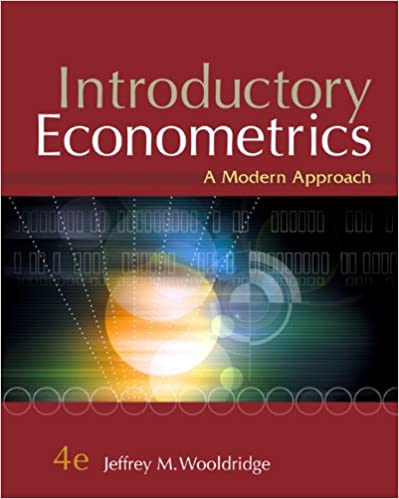
Introductory Econometrics 4th Edition by Jeffrey Wooldridge
Edition 4ISBN: 978-0324660609
Introductory Econometrics 4th Edition by Jeffrey Wooldridge
Edition 4ISBN: 978-0324660609 Exercise 5
Let gGDPt denote the annual percentage change in gross domestic product and let int t denote a short-term interest rate. Suppose that gGDP tis related to interest rates by  ,
,
where ut is uncorrelated with int,, intt_v and all other past values of interest rates. Suppose that the Federal Reserve follows the policy rule:
where 1 0. (When last year's GDP growth is above 3%, the Fed increases interest rates to prevent an "overheated" economy.) If vt is uncorrelated with all past values of intt and ut, argue that intt must be correlated with ut_1. (Hint: Lag the first equation for one time period and substitute for gGDP t-1 in the second equation.) Which Gauss-Markov assumption does this violate
 ,
,where ut is uncorrelated with int,, intt_v and all other past values of interest rates. Suppose that the Federal Reserve follows the policy rule:

where 1 0. (When last year's GDP growth is above 3%, the Fed increases interest rates to prevent an "overheated" economy.) If vt is uncorrelated with all past values of intt and ut, argue that intt must be correlated with ut_1. (Hint: Lag the first equation for one time period and substitute for gGDP t-1 in the second equation.) Which Gauss-Markov assumption does this violate
Explanation
Consider as annual percentage change in...
Introductory Econometrics 4th Edition by Jeffrey Wooldridge
Why don’t you like this exercise?
Other Minimum 8 character and maximum 255 character
Character 255


